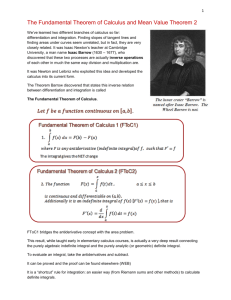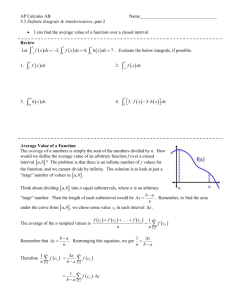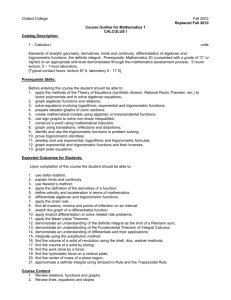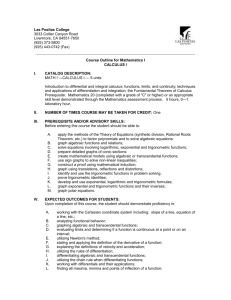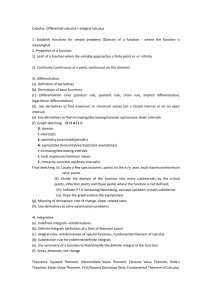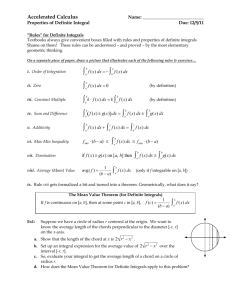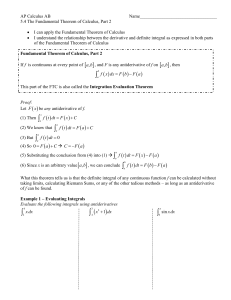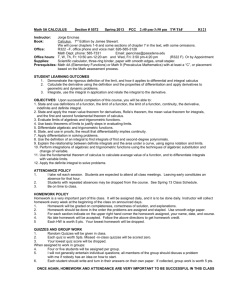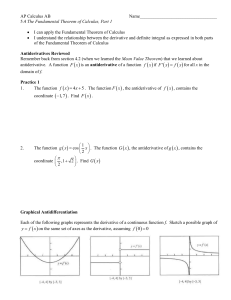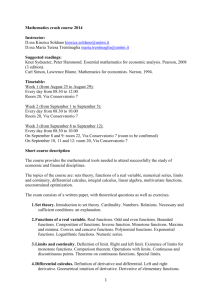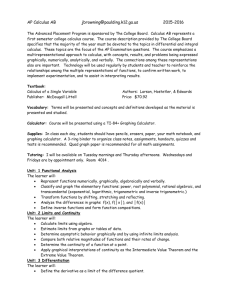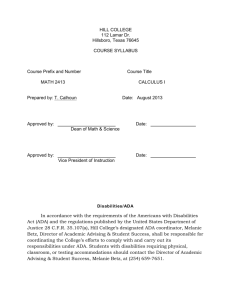MATH 5A – Calculus I
advertisement
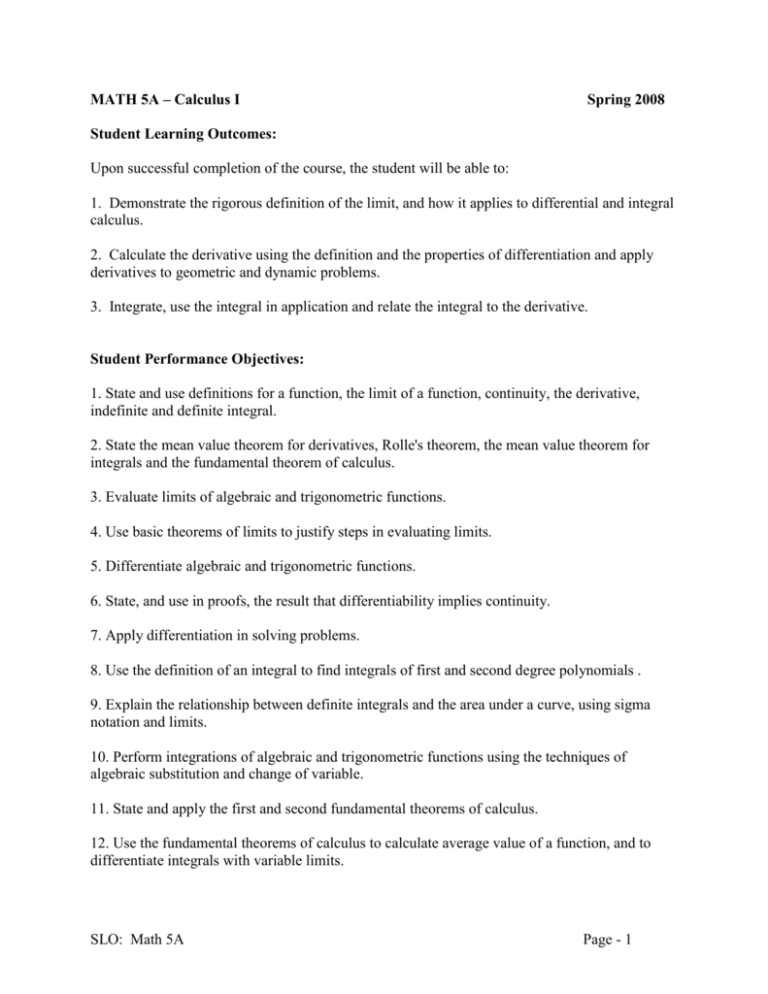
MATH 5A – Calculus I Spring 2008 Student Learning Outcomes: Upon successful completion of the course, the student will be able to: 1. Demonstrate the rigorous definition of the limit, and how it applies to differential and integral calculus. 2. Calculate the derivative using the definition and the properties of differentiation and apply derivatives to geometric and dynamic problems. 3. Integrate, use the integral in application and relate the integral to the derivative. Student Performance Objectives: 1. State and use definitions for a function, the limit of a function, continuity, the derivative, indefinite and definite integral. 2. State the mean value theorem for derivatives, Rolle's theorem, the mean value theorem for integrals and the fundamental theorem of calculus. 3. Evaluate limits of algebraic and trigonometric functions. 4. Use basic theorems of limits to justify steps in evaluating limits. 5. Differentiate algebraic and trigonometric functions. 6. State, and use in proofs, the result that differentiability implies continuity. 7. Apply differentiation in solving problems. 8. Use the definition of an integral to find integrals of first and second degree polynomials . 9. Explain the relationship between definite integrals and the area under a curve, using sigma notation and limits. 10. Perform integrations of algebraic and trigonometric functions using the techniques of algebraic substitution and change of variable. 11. State and apply the first and second fundamental theorems of calculus. 12. Use the fundamental theorems of calculus to calculate average value of a function, and to differentiate integrals with variable limits. SLO: Math 5A Page - 1 13. Apply the definite integral to solve problems. Course Content Outline: Functions Operations on Functions and Relations Elements of Analytic Geometry Limits and Continuity Derivatives of Algebraic and Trigonometric Functions The Chain Rule Implicit Differentiation Linear Approximation The Differential of a Real Function Applications of the Derivative Tangent and normal lines Mean Value Theorem First and Second Derivative Tests a. Graphing functions b. Maximum and minimum Velocity and Acceleration Related Rates The Definite Integral The Mean Value Theorem for Definite Integrals The Fundamental Theorem of Calculus Numerical Integration by Rectangles Properties of the Integral Integration by Substitution Application of the Definite Integral Area Volumes of Solids (Disk, Washer, Shells, Slices) Arc Length Areas of Surface of Revolution Work Moments and Centroids Introduction to Differential Equations SLO: Math 5A Page - 2

